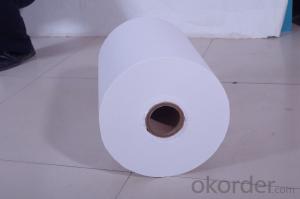Duct installation is a crucial aspect of any HVAC system, and it requires precision and the right tools to ensure efficiency and longevity. One such essential tool is the flexible duct hanger. These hangers are designed to support and secure flexible ducts in various applications, such as residential, commercial, and industrial settings. In this article, we will explore the importance of flexible duct hangers, their types, installation tips, and the benefits they offer to your HVAC system.
Why Flexible Duct Hangers Matter
Flexible duct hangers are not just any tools; they are the unsung heroes of duct installation. They play a vital role in maintaining the structural integrity and performance of your HVAC system. Without proper support, flexible ducts can sag, kink, or even collapse, leading to reduced airflow, increased energy consumption, and a shorter lifespan of the system. By using flexible duct hangers, you can prevent these issues and ensure optimal performance.
The Different Types of Flexible Duct Hangers
There is a wide variety of flexible duct hangers available in the market, each designed for specific applications and requirements. Some common types include:
– Spring Hangers: These hangers are equipped with a spring mechanism that provides constant tension to the duct, preventing sagging and maintaining the desired shape.
– Cable Hangers: Made from stainless steel or other durable materials, cable hangers use a cable system to support the duct, offering flexibility and ease of installation.
– Strap Hangers: These hangers use straps to secure the duct in place, providing a simple and cost-effective solution for duct support.
– Rubber Hangers: Designed with rubber pads or grips, these hangers offer a non-slip surface to hold the duct firmly in place.
Installation Made Easy
Proper installation of flexible duct hangers is essential for their effectiveness. Here are some tips to help you get the job done right:
1. Measure and Mark: Before you start, measure the length and diameter of your duct and mark the locations where you want to install the hangers.
2. Choose the Right Hanger: Select the appropriate type of hanger based on your duct’s material, size, and the application’s requirements.
3. Secure the Hanger: Attach the hanger to the structure, ensuring it is firmly in place and can support the weight of the duct.
4. Attach the Duct: Carefully slide the duct into the hanger, making sure it is properly aligned and secured.
5. Check for Stability: After installation, give the duct a gentle tug to ensure it is stable and the hanger is providing adequate support.
Benefits of Using Flexible Duct Hangers
Investing in flexible duct hangers is not just about maintaining the aesthetics of your duct system; it offers several benefits that contribute to the overall performance and efficiency of your HVAC system:
– Improved Airflow: By preventing sagging and maintaining the duct’s shape, flexible duct hangers ensure unobstructed airflow, leading to better heating and cooling performance.
– Reduced Energy Consumption: Efficient airflow means your HVAC system doesn’t have to work as hard, resulting in lower energy bills.
– Extended System Lifespan: Proper support and maintenance of the duct system can extend its life, saving you money on replacement costs.
– Easy Maintenance: With flexible duct hangers in place, accessing and cleaning the ducts becomes easier, promoting better indoor air quality.
– Compliance with Building Codes: Using the right duct hangers ensures that your installation meets local building codes and safety standards.
When to Replace Flexible Duct Hangers
Like any other component of your HVAC system, flexible duct hangers can wear out or become damaged over time. Here are some signs that it’s time to replace them:
– Visible Wear and Tear: If the hangers show signs of rust, fraying, or other damage, it’s time for a replacement.
– Inadequate Support: If the ducts are sagging or not staying in place, the hangers may no longer be effective.
– System Performance Issues: If you notice a decline in your HVAC system’s performance, such as reduced airflow or increased energy consumption, it could be due to faulty hangers.
DIY or Hire a Professional?
The decision to DIY or hire a professional for duct hanger installation depends on your comfort level with tools and your understanding of HVAC systems. While some homeowners may feel confident tackling the project themselves, others may prefer the peace of mind that comes with hiring a professional. Here are some factors to consider:
– Your Skill Level: If you have experience with duct installations or are comfortable learning, a DIY approach may be suitable.
– Time Constraints: DIY projects can take longer, especially if you encounter unexpected issues. Hiring a professional can save time.
– Cost: DIY can be more cost-effective, but the quality of the installation is crucial. A poor installation can lead to more significant problems down the line.
– Safety: Working with HVAC systems can be dangerous if you’re not familiar with the safety precautions. A professional will have the necessary training and equipment.
Wrapping Up
Flexible duct hangers are an indispensable part of any duct installation project. They not only support the ducts physically but also contribute to the overall efficiency and performance of your HVAC system. By understanding the different types, proper installation techniques, and the benefits they offer, you can make an informed decision on which hangers to use and how to install them. Whether you choose to DIY or hire a professional, ensuring the correct use of flexible duct hangers will pay off in the long run, keeping your ducts in tip-top shape and your HVAC system running smoothly.

